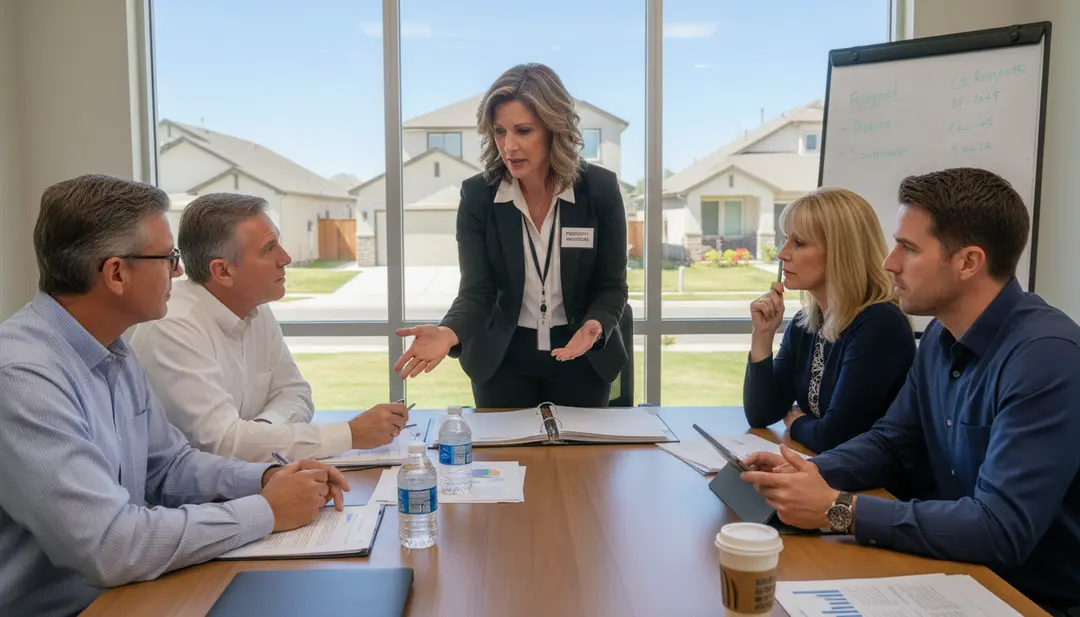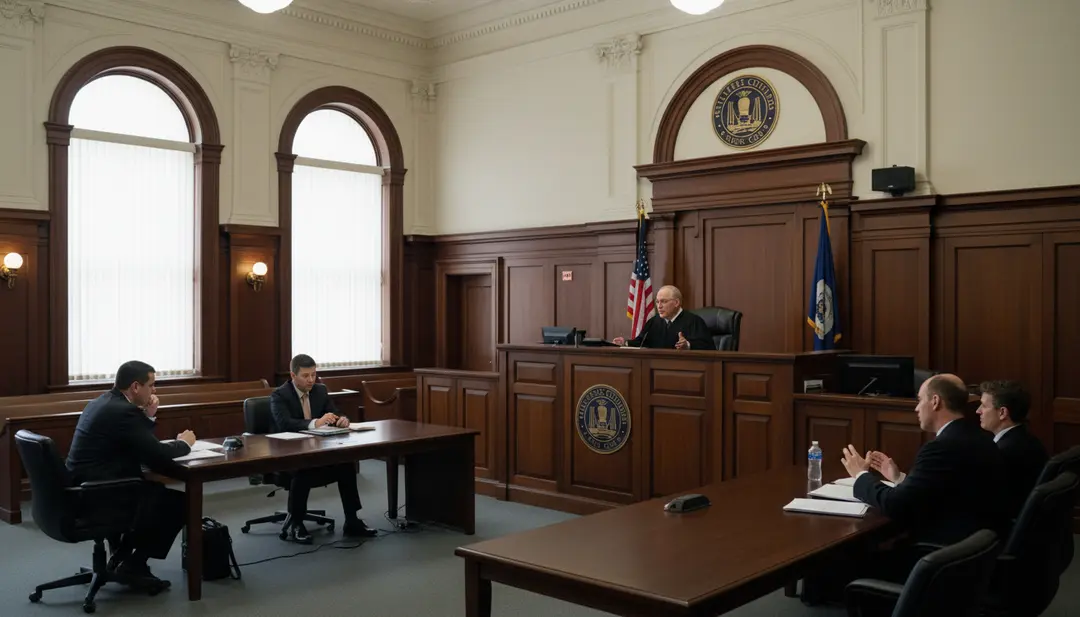Your Creditor Rights in Bankruptcy: What Happens to Creditors When Someone Files
When a homeowner files for bankruptcy, it's essential for HOA managers and board members to understand the immediate and long-term effects on creditor rights. The association's budget, reserves, and service contracts may be impacted, so having clarity on what happens next is crucial.
As soon as a bankruptcy case is filed, the automatic stay takes effect. This legal mechanism halts all collection activities, including sending late notices and initiating foreclosure proceedings. For Chapter 7 bankruptcies, assessments that are owed before the bankruptcy filing may be discharged, removing the homeowner’s personal liability. In Chapter 13 cases, past-due amounts are typically included in a court-approved payment plan, allowing the debtor to catch up over time. However, assessments that accrue after the filing (post-petition dues) still need to be paid, and the association’s lien rights play a critical role in determining payment priority and recovery options.
The HOA’s responsibilities as a creditor do not end when the automatic stay begins. It is important to monitor deadlines and submit a thorough, timely proof of claim with detailed account documentation. Communication with the homeowner’s attorney should be respectful and factual to avoid Fair Debt Collection Practices Act (FDCPA) violations and to keep open the possibility of repayment arrangements. Associations should anticipate possible cash flow challenges and be prepared to adjust their budgets temporarily if necessary.
Arizona law introduces additional considerations. Recent legislative changes, such as those under Proposition 209, have altered garnishment limits and exemptions, which may further restrict post-judgment recovery. This makes it even more vital for HOAs to handle bankruptcy procedures correctly. For those seeking a deeper understanding of the intersection between collections and bankruptcy timelines, consulting a specialized guide on Arizona HOA rights during homeowner bankruptcy is recommended.
At Halk, Oetinger, and Brown, HOA clients can access practical legal support without unexpected hourly fees. The firm’s flat-rate general counsel services and complimentary assessment collection program are tailored for Arizona HOAs, offering financial protection and confident management of bankruptcy situations.
Overview of U.S. Bankruptcy Code and Its Purpose
The U.S. Bankruptcy Code is designed to provide honest debtors with an opportunity for a financial reset, while also protecting the rights of secured creditors and establishing fair rules for payment distribution. For HOAs, the Code clarifies which amounts are immediately collectible, which are delayed, and which may never be recovered. Understanding these rules around creditor rights, the impact of bankruptcy filings, and lien status is key to safeguarding HOA assessments and maintaining a stable budget.
Bankruptcy law classifies debts as either secured or unsecured. HOAs with a properly recorded assessment lien have a secured claim for at least part of the outstanding balance. While the automatic stay temporarily halts collections, it does not eliminate the lien itself. Post-petition assessments continue to accrue as long as the homeowner retains title to the property. It's the association’s responsibility to protect its interests by adhering to deadlines and actively participating in the bankruptcy process.
Chapter 7: Liquidation and Its Effects on Your HOA
In Chapter 7 bankruptcy, the debtor’s non-exempt assets are liquidated to pay creditors. However, most cases are “no-asset,” meaning that unsecured creditors typically receive nothing. For HOAs, a recorded lien survives the discharge, because the discharge removes personal liability but not the property-based obligation.
• Secured lien stays: The assessment lien remains with the property, subordinate only to senior liens, taxes, and Arizona’s priority rules.
• Unsecured portion may be discharged: Any debt not covered by a valid lien may be eliminated.
• Post-petition dues continue: Assessments incurred after filing are still owed for as long as the homeowner owns the property.
To protect the HOA’s position, it's important to:
• Separate pre-petition and post-petition charges, including assessments, late fees, and collection costs.
• Track trustee communications, asset reports, and objection deadlines, with assistance from legal counsel.
• Consider seeking relief from the stay to resume lien foreclosure if nonpayment persists and property equity permits.
• Keep all communications with the homeowner’s attorney professional and coordinated through your HOA attorney.
If wage or bank garnishment was part of your pre-bankruptcy collection strategy, be aware that Arizona law may limit these remedies after judgment, especially under Proposition 209.
Chapter 13: Repayment Plans That Protect Creditor Rights
Chapter 13 bankruptcy allows the homeowner to propose a three- to five-year repayment plan. This plan includes catching up on past-due HOA fees, with the automatic stay preventing foreclosure while the plan is active. The HOA’s lien remains until the secured portion is paid off per the plan and applicable law.
• Arrears are scheduled: Past-due assessments and authorized fees are paid through the bankruptcy trustee according to the proof of claim.
• Lien retention: The secured claim is preserved until satisfied. If the plan fails, the case may be dismissed without a discharge.
• Ongoing assessments: The homeowner must continue to pay new dues on time after filing. Missed payments may justify seeking stay relief.
To protect your interests in Chapter 13:
• Object to any plan that understates arrears, misclassifies your claim, or omits authorized fees.
• Participate in key hearings, such as the 341 meeting and the confirmation hearing, where critical decisions are made.
• Maintain thorough records, including a detailed ledger and documentation of the lien and payoff amounts.
• Monitor for missed payments and consult counsel if defaults occur.
• Ensure HOA records and communications are aligned to avoid discrepancies between claims and plan payments.
A well-documented claim and prompt objection to problematic plans are often the difference between an efficient resolution and ongoing disputes.
Secured, Unsecured, and Priority Creditors: Know Your Status
The classification of your claim determines payment priority, timing, and whether your balance survives discharge. In bankruptcy, claims fall into three categories: secured, unsecured, and priority. A properly recorded assessment lien gives the HOA a secured claim against the property. Unsecured claims, such as amounts not covered by a valid lien, often receive little or nothing. Some claims, like those for taxes or support, are considered priority and paid before general unsecured creditors.
For Arizona HOAs, these distinctions have real consequences in both Chapter 7 and Chapter 13. A secured lien can survive discharge and must be resolved before the property can be sold or refinanced. Unsecured claims may be discharged in Chapter 7 or paid at a reduced rate in Chapter 13. Understanding the classification of your claim enables you to assert creditor rights effectively and set realistic expectations for recovery.
How Bankruptcy Affects Your Collection Efforts and Lawsuits
Bankruptcy fundamentally changes how and when an HOA can pursue collections. Understanding the rules around creditor rights, the automatic stay, claims, and liens is essential for protecting the association’s finances and minimizing legal risks. Once a bankruptcy case is filed, the association’s litigation approach must adapt immediately. Procedures should be tightened, all actions documented, and court processes utilized to maintain the HOA’s place among creditors.
Navigating the Automatic Stay as an HOA Creditor
The automatic stay begins instantly upon filing, halting nearly all collection and legal activities, including:
• Evictions and lockouts
• Wage and bank garnishments
• Lawsuits, default judgments, and hearings
• Lien enforcement and foreclosure actions
• Repossession of access devices or other payment enforcement tactics
Immediate steps to follow include:
• Stopping all collection communications related to the debt
• Keeping separate records for pre- and post-petition charges
• Consulting with your attorney before contacting a homeowner in bankruptcy
• Ensuring all communication remains respectful, factual, and preferably through legal counsel
Relief from the stay may be appropriate if post-petition assessments remain unpaid, the property lacks insurance or is at risk, there is no equity, or the filing appears to be in bad faith. Work with your attorney to evaluate specific cases. Remember, the stay pauses enforcement but does not eliminate your lien, so maintain accurate records to resume lawful actions if the stay is lifted or the case ends.
Filing Proofs of Claim to Secure Your Share
Submitting a timely and well-documented proof of claim is essential for payment through bankruptcy and to protect lien rights. The claim should include:
• An itemized account ledger as of the petition date, showing all amounts owed
• The legal basis for the claim, referencing CC&Rs, bylaws, and collection policies
• Evidence of the recorded assessment lien, including date, instrument number, and legal description
• Clear classification of secured and unsecured portions with supporting valuation
Best practices include filing early and amending as necessary, keeping claims free of post-petition charges, monitoring plan terms for errors, and ensuring accurate application of trustee payments. Respecting the automatic stay and adhering to these steps are central to enforcing creditor rights and protecting the community’s finances.
At Halk, Oetinger, and Brown, the firm’s flat-rate general counsel and contingent assessment collection services are designed to help Arizona HOAs execute all necessary steps with precision and efficiency.
Conclusion
This overview provides a clear understanding of creditor rights in bankruptcy, the sequence of events when someone files, and the specific effects on Arizona HOAs. While the automatic stay halts collection activities, it does not erase valid liens. Chapter 7 may discharge unsecured balances, and Chapter 13 generally incorporates arrears into a repayment plan. The recommended course of action is to record liens promptly, maintain accurate ledgers, file proofs of claim on time, and communicate respectfully with the homeowner’s attorney.
By understanding and following the bankruptcy process, HOAs can safeguard their budgets, respond appropriately to payment issues, and ensure compliance with legal requirements. Meeting deadlines, monitoring repayment plans, and seeking relief from the stay when justified are all critical steps. Adjusting cash flow as needed and keeping owners informed with clear, empathetic communication will further support financial stability and reduce risk.
For HOAs seeking expert guidance and predictable costs, Halk, Oetinger, and Brown offer flat-rate legal services and a no-cost assessment collection program. Their attorneys manage all aspects of lien enforcement, claims, plan objections, and Chapter 7 and Chapter 13 treatment, ensuring the community’s finances are protected throughout the bankruptcy process.












![Does an Arizona HOA Need to Update AZCC Records After Changing Management Companies? [2025 Guide]](https://cdn.prod.website-files.com/66b97099f8f1d06c15fb6dbe/68bf09165df481aa44c0f29d_corporate-change-management-leadership-transition.jpg)